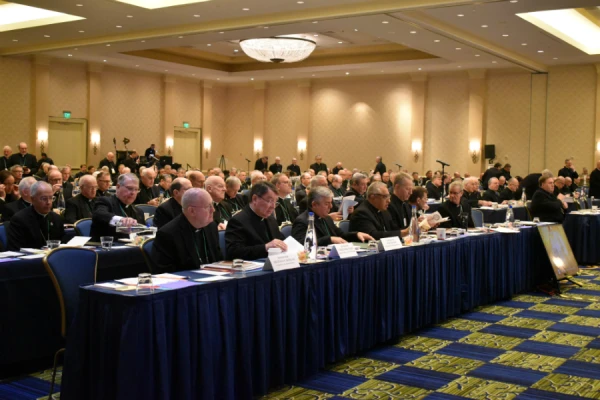
Washington D.C., Mar 16, 2020 / 10:33 am (CNA).- A national third-party reporting system for allegations of abuse, neglect, or misconduct against bishops in the US has launched.
The Catholic Bishop Abuse Reporting Service is operated by Convercent Inc., “an independent, third-party entity that provides intake services to private institutions for reports of sensitive topics such as sexual harassment through a secure, confidential and professional platform” according to a March 16 statement from the Archdiocese of Oklahoma City.
The system gathers and routes reports of abuse to the appropriate ecclesial authorities, so that the reports can then be investigated.
The reporting system does not replace reporting abuse to civil authorities, but some reports, such as those of sexual abuse of a minor, will be conveyed also to civil authorities.
The system is meant only for allegations involving bishops.
It allows for reports of a US bishop who has forced someone to perform or to submit to sexual acts through violence, threat, or abuse of authority; performed sexual acts with a minor or a vulnerable person; produced, exhibited, possessed or distributed child pornography, or recruited or induced a minor or a vulnerable person to participate in pornographic exhibitions; or a bishop or administrator of a local Church who has “intentionally interfered with a civil or Church investigation into allegations of sexual abuse committed by another cleric or religious.”
In Nocember 2019, the general counsel for the US bishops' conference said that a process would be in place promptly to filter out irrelevant claims and ensure that allegations pertain to bishops and to those acts of misconduct for which the system is meant.
When a report is received through the system, it will be forwarded to the metropolitan archbishop “and a designated lay staff member who will assess the report.” If the report regards the metropolitan or the metropolitan see is vacant, it will go instead to the senior suffragan bishop, and to a member of the bishop's staff.
After review by the metropolitan and a layman, the report will be sent to the apostolic nuncio with an initial assessment; he will in turn send the report and assessment to the Holy See, which will determine if a formal investigation is warranted. If so, it will authorize a bishop to oversee it. The investigators will include lay persons, and should normally be completed within 90 days of the Holy See's determination.
The system is paid for the by dioceses and eparchies of the US.
In September 2018, the US bishops’ executive committee had initially proposed a third-party reporting mechanism to handle accusations made against bishops. The decision followed new claims of sex abuse that had been made against Theodore McCarrick in the summer of 2018; in August, McCarrick was removed from the College of Cardinals and assigned a life of prayer and penance.
At their November 2018 meeting, however, the U.S. bishops did not take substantive action on the abuse crisis following instructions from the Vatican that they not act until a clergy sex abuse summit in Rome would be convened in February 2019.
After that February summit, Pope Francis issued his apostolic letter Vos estis lux mundi, which outlined a canonical process of handling accusations of abuse, neglect, or misconduct made against bishops.
To handle such accusations, the U.S. bishops voted overwhelmingly at their June 2019 to authorize a third-party reporting mechanism to receive accusations made online or by phone.
If you value the news and views Catholic World Report provides, please consider donating to support our efforts. Your contribution will help us continue to make CWR available to all readers worldwide for free, without a subscription. Thank you for your generosity!
Click here for more information on donating to CWR. Click here to sign up for our newsletter.



In light of the current virus, the clerical abuse scandal seems like history. What did we learn? We learned not to trust priests, and even more to not trust Bishops, Archbishops, and Cardinals, and finally even the Pope. Apparently as many as a third of the Catholics left the church over the scandal. I am sorry for all of this. As people rejected the many because of the sins of a few.
That said, what we didn’t learn is to find the saints in all of this. Many priests reached out their hands to help to heal the victims. Maybe too few reported the abuser, but the church did clean house, even if not the hierarchy. Many people prayed for healing from this terrible scandal.
Yes, the moral corruption within the hierarchy of the church remains. It is self-evident. But, the saints within the church exist as well. Did we find them? Knowing the sins doesn’t feel like enough. I want to know the good that has come from this. I want to once again hear about the lives of the saints. Yes, there were saints in the midst of this. Good priests. I am still a believer.